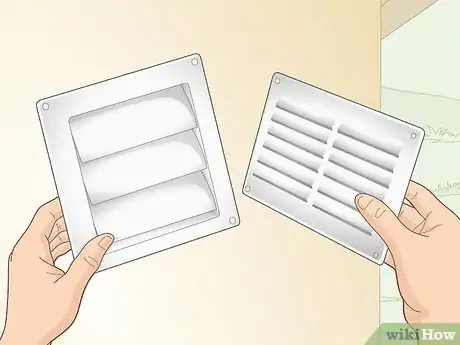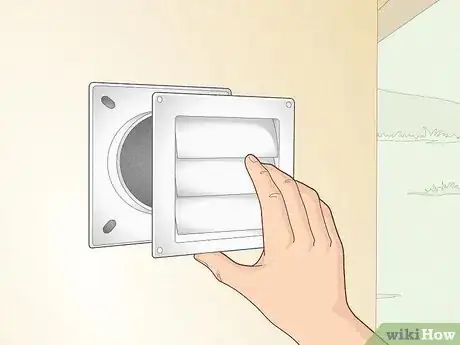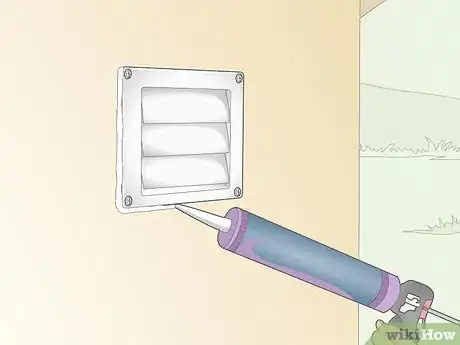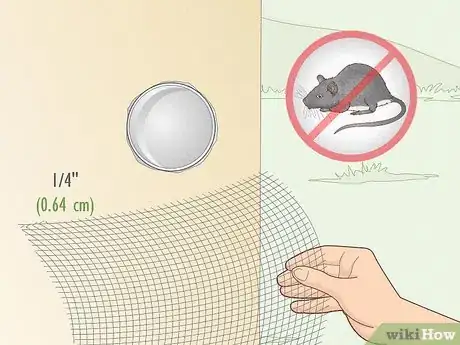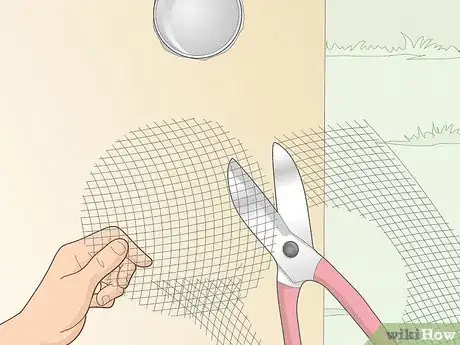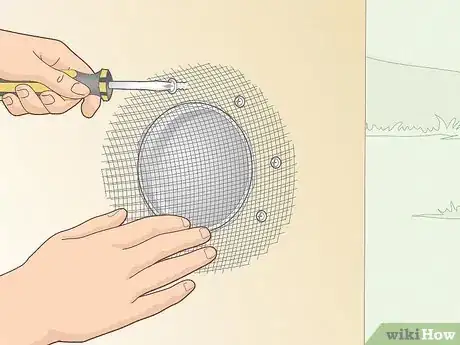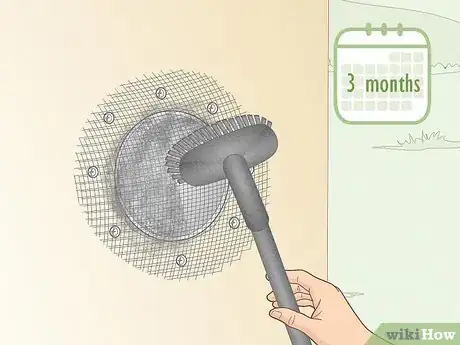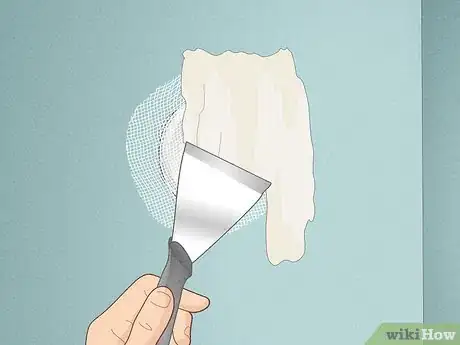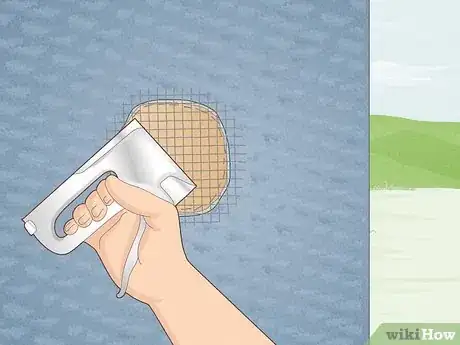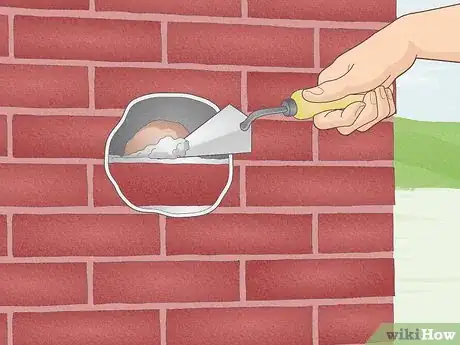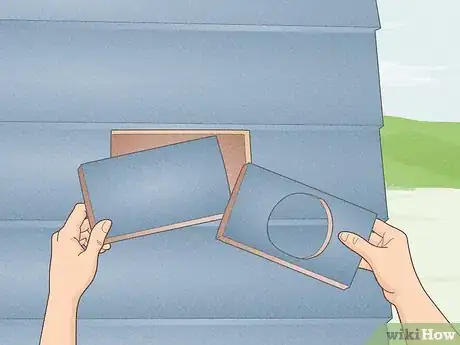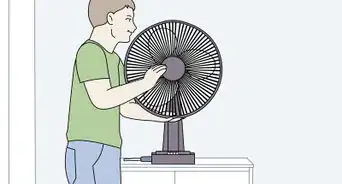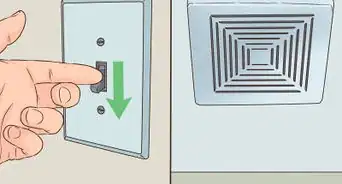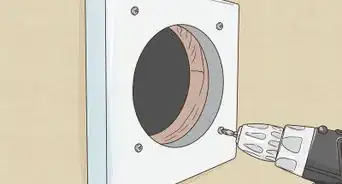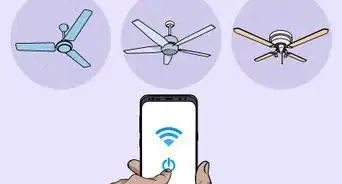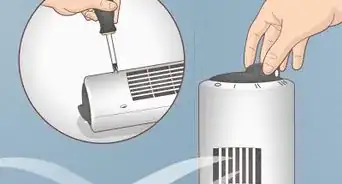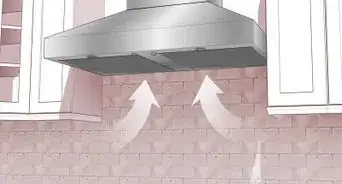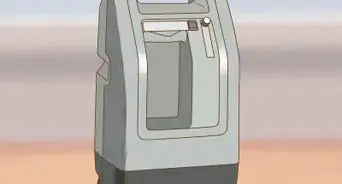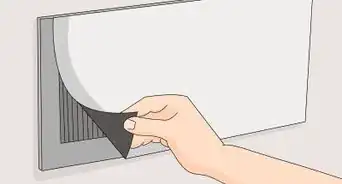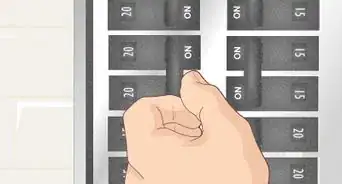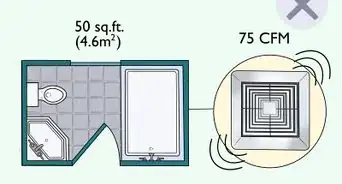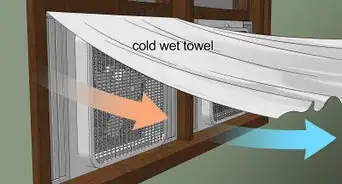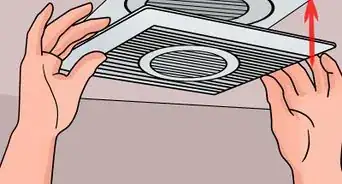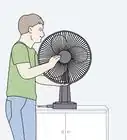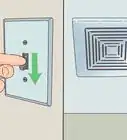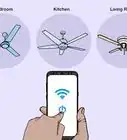This article was co-authored by Allen Lee. Allen Lee is a Home Improvement Specialist and the Owner of Honest Lee Handyman Services, a licensed and insured handyman business servicing Sacramento, California, and surrounding areas. Working with homeowners and businesses to get their small repairs done in a timely and efficient manner, Honest Lee Handyman Services provides gutter and dryer vent cleaning along with fixture, fence, drywall, and toilet repairs.
There are 15 references cited in this article, which can be found at the bottom of the page.
This article has been viewed 67,195 times.
An uncovered dryer vent hole is a potential way for small critters and pests to get inside the vent system, which can turn into a real hassle. You’d probably rather not have any birds, mice, or other animals set up a cozy nest inside the vent duct, so cover the vent hole up to keep out these unwelcome house guests. Fortunately, there are plenty of commercial dryer vent covers available and DIY alternatives that you can use to cover your dryer vent hole and prevent small animals from getting inside, while still allowing the proper airflow. You should also cover up old, unused dryer vent holes to seal up your home for better insulation and to keep out pests.
Steps
Installing a Dryer Vent Cover
-
1Purchase a fixed-louvre or flap-style dryer vent hole cover. A fixed-louvre dryer vent cover has unmoveable slats with small gaps between them that allow for proper ventilation but aren’t big enough for animals to crawl into. A flap-style dryer vent cover has 3 moveable flaps that lift up when air is coming out of the vent but sit flat to keep critters out when you’re not using your dryer. Shop online or at a home improvement center for these styles of dryer vent covers and choose one that you think will look good on the outside of your home.[1]
- Use this method when you want your dryer vent’s cover to look clean and professional.
- Only install a dryer vent hole cover after you have installed the hose.
- There are also cage-style dryer vent covers that are called bird boxes, which are specifically designed to keep birds and other critters out of a vent. However, a disadvantage of these is they tend to collect lint quickly and get clogged up more easily than louvre-style covers.
-
2Fit the dryer vent cover over the exterior opening of the venting hose pipe. Your dryer vent hose connects to a short section of pipe that goes through the wall and sends air from your dryer to the outside. Push the round opening of your new dryer vent cover onto the rim of this pipe until it sits flush against the exterior wall.[2]
- Dryer vent covers and hoses have a 4 in (10 cm) standard opening, so you shouldn’t have any problem fitting your cover onto the pipe at the end of the hose.
Advertisement -
3Screw the cover to the exterior wall using wood or masonry screws. Use wood screws if your exterior wall is wood or vinyl and use masonry screws if the wall is brick or concrete. Place 1 screw into each of the 4 holes in the 4 corners of the dryer vent cover, then use an electric drill to drive them into place in the wall.[3]
- Your dryer vent cover may or may not come with mounting screws of the correct length. If not, you can use something like 2–3 in (5.1–7.6 cm) long screws.
- As long as the screws are long enough to pass through the cover and about 1 in (2.5 cm) into your wall, it will be very secure.
-
4Caulk around the edges of the cover with silicone caulk to seal it to the wall. Use a caulking gun to apply a bead of silicone caulk along each edge of the cover where it sits flush against your wall. Scrape away any excess caulk using a thin-edged plastic utensil, such as a plastic putty knife or even an old credit card.[4]
- The caulk will create a waterproof seal around the cover to keep out rainwater and other moisture that could get trapped inside and cause problems down the line.
-
5Inspect and clean your dryer vent cover at least twice a year. Look at your vent for visible buildups of lint and other debris. Use an extendable brush, an air compressor, or a vacuum with a hose and brush combination to clean the dryer vent cover and keep it in tip-top shape.
- Aim to clean the dryer vent once in the spring and once in the fall.
- If you have a full house, such as if you live with a family with several kids, you might have to clean the vent hole cover every 3-6 months, since you probably dry clothes very often.
- Commercial dryer vent covers are designed for the best airflow and minimum maintenance, but they can still accumulate lint over time. That’s why it’s important to clean them at least once a year to keep your dryer working efficiently and prevent fire hazards and energy waste.
Using Hardware Cloth
-
1Cover your dryer vent hole with 1⁄4 in (0.64 cm) hardware cloth. Hardware cloth is a type of sturdy, galvanized wire mesh and 1⁄4 in (0.64 cm) hardware cloth means that it has 1⁄4 in (0.64 cm) openings in the mesh. These spaces are small enough that even tiny critters like mice won’t be able to get through the cover.[5]
- Use this method if you have some hardware cloth handy and don’t mind not having a sleek commercial dryer vent cover on the outside of your home.
- You can also use this method to block up existing dryer vent covers that are missing flaps or louvres to prevent animals from getting in through the gaps.[6]
-
2Cut a piece of hardware cloth to 2 in (5.1 cm) larger than the dryer vent hole. Use wire cutters to snip a square piece of hardware cloth that is at least 2 in (5.1 cm) wider and taller than the dryer vent hole’s exterior opening. This will provide extra height and width for fastening the mesh to the wall.[7]
- For example, a 6 in (15 cm) by 6 in (15 cm) piece will cover a standard 4 in (10 cm) dryer vent opening.
- If you’re installing the mesh over a flap-style louvre vent cover that has a missing flap, make sure you just cover up the gap and not the entire vent cover. Otherwise, the remaining flaps won’t be able to open when you’re using your dryer.
-
3Attach the piece of mesh to the wall using wood screws or roofing nails. Position the piece of hardware cloth over the dryer vent hole. Use an electric drill to drive screws over the mesh and into the wall in each corner or hammer roofing nails over the mesh to fix it to the wall.[8]
- You can use 1–1.5 in (2.5–3.8 cm) screws or nails for this.
- If your wall is made out of brick, concrete, or stone, use masonry screws instead.
-
4Clean lint off the hardware cloth every 3 months or when it starts to build up. The small holes in hardware cloth will likely collect lint faster than a commercial dryer vent cover does, so keep an eye on your homemade vent cover and watch for lint accumulation. Use a vacuum to suck up all the lint or manually pull it out whenever you notice it, so your dryer’s ventilation system keeps working properly.[9]
- If the mesh ever gets super dirty and you can’t successfully clean it while it’s attached to your wall, you can remove the screws or nails and wash it or replace it with a new piece of hardware cloth.
Sealing an Unused Dryer Vent Hole
-
1Fill the interior hole in the wall with fiberglass insulation from the inside. Remove any remaining exhaust pipes and flexible hoses from the hole in the wall. Cut some fiberglass insulation from a roll to slightly bigger than the size of the hole and pack it into the hole from the inside wall to replace the missing insulation in the wall.[10]
- You can use this method if your laundry room has moved and you no longer want a dryer vent in the old location or if you’ve switched to a ventless dryer.
- Covering up unused vents will block out drafts and moisture, which can reduce energy use and prevent moisture-related problems. It will also keep critters out of your home if there is no longer a dryer vent hole cover on the outside.
- If the interior wall isn’t insulated, like if it’s a brick wall or made of unfinished and uninsulated drywall, you don’t need to fill the hole in with any insulation.
- Always wear work gloves, a dust mask, and protective eyewear when you’re patching an old dryer hole.
-
2Patch the hole in the drywall on the interior wall. Cut a fiberglass wall patch to 1 in (2.5 cm) bigger than the hole or cut a piece of drywall to the size and shape of the hole. Put the patch over the hole, on the inside wall, and cover it with a thin layer of joint compound. Let it dry for 24 hours, sand it smooth, then repeat the process to add another layer of joint compound.[11]
- Fiberglass wall patches work well for holes up to about 1 in (2.5 cm), so that would be the easiest way to cover up a small dryer vent hole. However, if your hole is bigger or you just want a new piece of drywall there, you can use drywall instead.
- You can either paint over the inside patch or leave it as is if it’s just in an unfinished garage, basement, or somewhere else where you aren’t too worried about the appearance.
- If the interior wall doesn’t have drywall, such as if it’s a brick wall, you don’t need to install any drywall.
-
3Fix builder’s paper and wire mesh into the outer hole if the wall is stuccoed. Trim a piece of builder’s paper to fit in the hole using a utility knife, press it into the hole on top of the insulation, and staple it along the edges to any exposed builder’s paper or wood inside the hole. Cut a piece of galvanized wire mesh to about 1⁄4 in (0.64 cm) bigger than the size of the hole using wire cutters or tin snips and press it into the exterior hole on top of the builder’s paper.[12]
- The builder’s paper will create a moisture barrier and the mesh will give the stucco patch something to cling to
-
4Seal the outer hole up with quick-setting repair stucco if the wall is stuccoed. Mix a batch of quick-setting repair stucco according to the manufacturer’s instructions. Use a trowel to apply an even first coat of the repair stucco over the mesh. Wait the manufacturer’s recommended amount of time for the stucco to cure, then apply another coat. Wait for the second coat to dry, then apply 1 final coat and smooth it out until it’s flush with the surrounding wall.[13]
- Quick-dry stucco repair typically dries within 45 minutes to 2 hours, so it’s a much more efficient way to patch a stucco wall than applying traditional stucco.
- Try to only mix as much quick-setting repair stucco as you need for each coat. You only get about 20 minutes of working time during which you can use the stucco, so if you mix too much, the leftovers will go to waste.
-
5Fill in the outer hole with new bricks if the exterior wall is made of brick. Measure the height and width of the hole and cut bricks to fit the space. Mix some mortar and lay it into the hole using a trowel. Position the first layer of bricks on top of the mortar and repeat the process until you fill in the entire hole. Cover the patched section with a tarp for 3 days to protect it from the elements and mist the patch once a day with water to keep it moist while it cures.[14]
- If your exterior brick wall is the natural color of the bricks, try to use new bricks that most closely match the color of the existing bricks. That way, they’ll blend in after some time once they get weathered.
-
6Cover the outer hole with new siding if the exterior wall is sided. Use a circular saw or a reciprocating saw to cut the siding surrounding the vent hole into a square about 2 in (5.1 cm) bigger than the hole in order to expose the underlying wood. Cut matching siding to fit the new hole and fix it to the underlying wood using galvanized nails and a hammer or nail gun.[15]
- This applies to various types of common siding materials, such as wood slat siding and vinyl siding.
Warnings
- Listen and look for signs of active nests inside your dryer vent before you cover it. These include rustling or chirping sounds, visible nesting material, and bird or other animal droppings below the vent hole. If you suspect there are animals in the vent, you can call a pest control company to come clear it out before you cover it.[18]⧼thumbs_response⧽
- Always wear heavy-duty work gloves, safety glasses, and a dust mask to protect yourself when you’re patching an unused dryer hole.⧼thumbs_response⧽
Things You’ll Need
Installing a Dryer Vent Cover
- Dryer vent cover
- Electric drill
- Wood or masonry screws
- Caulking gun
- Silicone caulk
- Plastic putty knife
Using Hardware Cloth
- 1⁄4 in (0.64 cm) hardware cloth
- Wire cutters
- Wood screws or roofing nails
- Power drill (optional)
- Hammer (optional)
- Vacuum (optional)
Sealing an Unused Dryer Vent Hole
- Safety glasses
- Work gloves
- Dust mask
References
- ↑ https://www.youtube.com/watch?v=aNZDWAbsb6Q&feature=youtu.be&t=1
- ↑ https://www.youtube.com/watch?v=aNZDWAbsb6Q&feature=youtu.be&t=52
- ↑ https://www.youtube.com/watch?v=8zVczoLYMjM&feature=youtu.be&t=539
- ↑ https://www.youtube.com/watch?v=8zVczoLYMjM&feature=youtu.be&t=583
- ↑ https://www.bobvila.com/slideshow/11-ways-to-get-rid-of-mice-47935
- ↑ https://www.nps.gov/orgs/1103/upload/NPS-Rodent-Exclusion-Manual-Mechanical-Rodent-Proofing-Techniques_2019.pdf
- ↑ https://www.naturalhandyman.com/qa/qaclothesdryer.html
- ↑ https://www.naturalhandyman.com/qa/qaclothesdryer.html
- ↑ https://www.humanesociety.org/resources/preventing-cavity-nesting-birds-spring
- ↑ https://www.latimes.com/archives/la-xpm-2001-jan-07-re-9358-story.html
- ↑ https://www.businessinsider.com/how-to-repair-a-hole-in-drywall#how-to-patch-and-repair-larger-holes-in-drywall-6
- ↑ https://www.thisoldhouse.com/siding/21016528/how-to-repair-stucco
- ↑ https://www.youtube.com/watch?v=rcjyHTxcym4&feature=youtu.be&t=225
- ↑ https://www.thisoldhouse.com/masonry/21016676/how-to-repair-mortar-in-a-brick-wall
- ↑ https://www.youtube.com/watch?v=xq4etjKrL1Y&feature=youtu.be&t=15
- ↑ https://www.cdc.gov/rodents/prevent_infestations/seal_up.html
- ↑ https://www.cdc.gov/rodents/prevent_infestations/seal_up.html
- ↑ https://www.humanesociety.org/resources/preventing-cavity-nesting-birds-spring
